Master Yan Luo’s head maps • frontal view and southwards looking
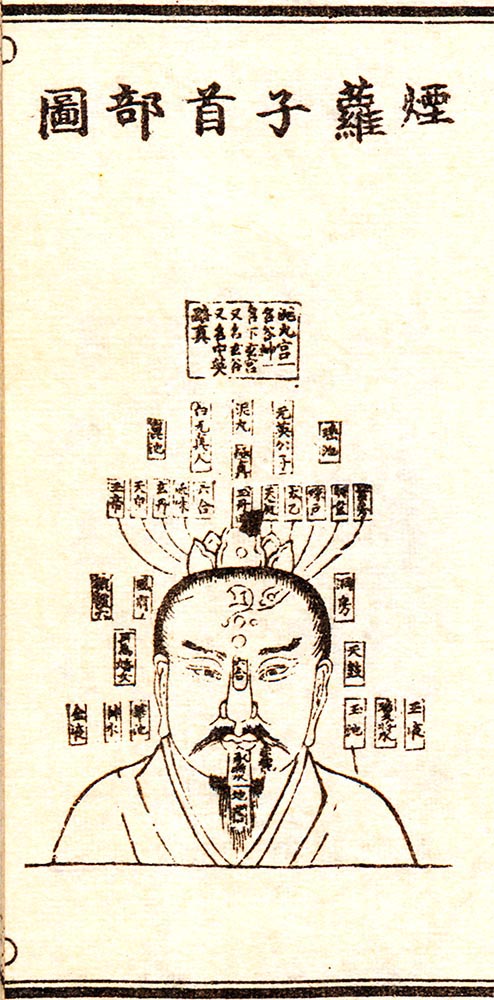
This page is viewed best with a large screen. 1 2 3 4 5 6 7 8 9 10 11 B ‘Master Yan Luo’s map of courting the perfected’ (Ti ke ge, 2b) 1 2 3 4 5 6 7 8 9 10 11 12 13 14 15 16 17 18 19 20 21 22 […]
The right kidney as the gate of life
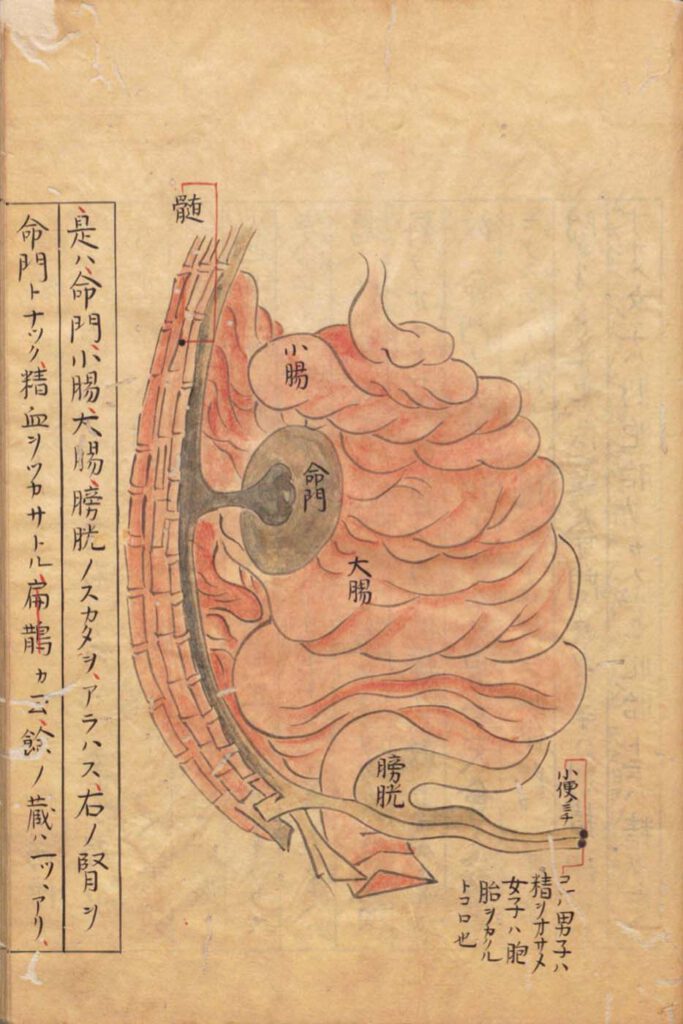
A B The Right kidney as the Gate of life. A No title. The right kidney as the Gate of life. Kajiwara Shōzen 梶原性全 (1265–1337) Man’anpo 万安方, 1315–27, scroll 54. Edo 江戸 period (1603–1868) manuscript. National Archives of Japan. B ‘The Right kidney as the Gate of life governs blood and essence and enters the […]
The Screen gate
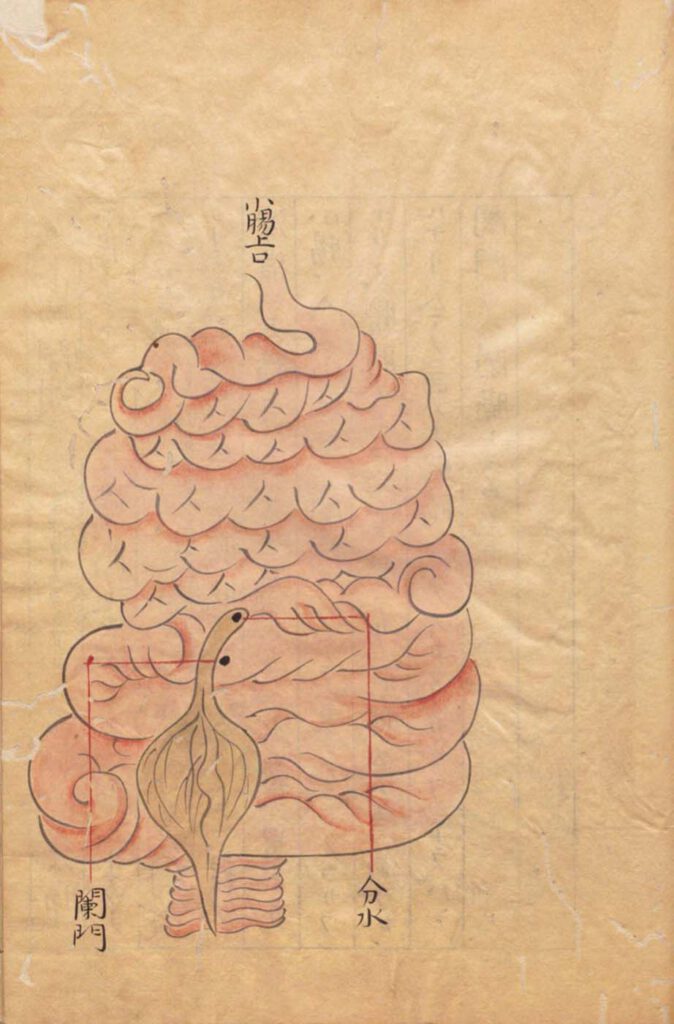
A B The Screen gate A No title. The Screen gate. Kajiwara Shōzen 梶原性全 (1265–1337) Man’anpo 万安方, 1315–27, scroll 54. Edo 江戸 period (1603–1868) manuscript. National Archives of Japan. B ‘Illustration of the Screen gate that separates water and grains’, Lanmen shuigu mibie tu 闌門水穀泌別圖. Wang Haogu 王好古 (1200–64?) The Great Teaching of Yi Yin’s Decoction […]
The spleen-stomach system
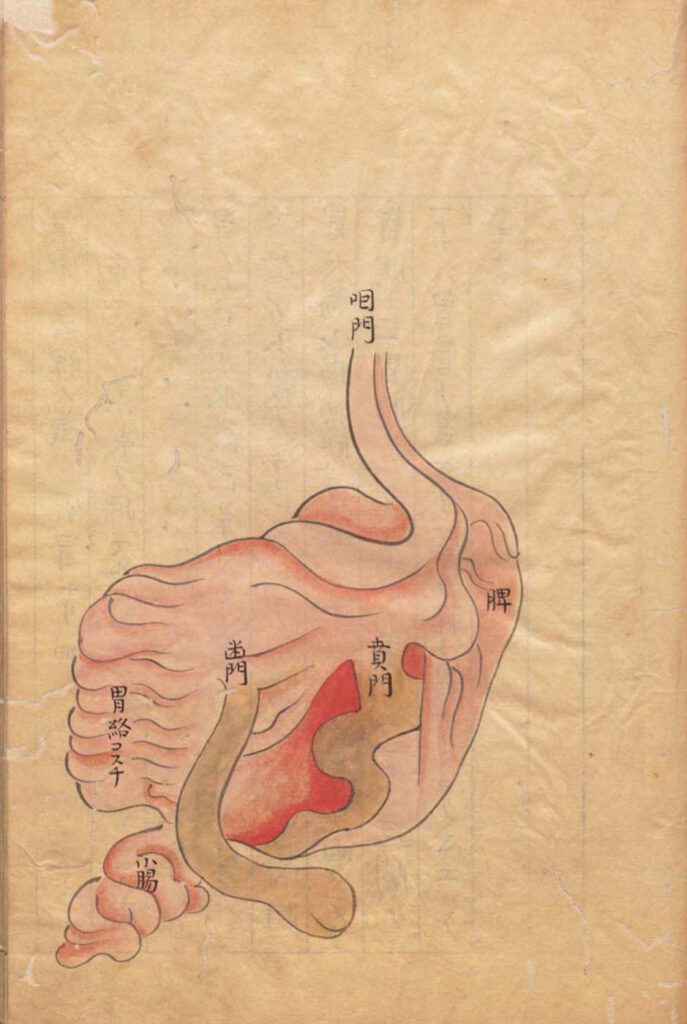
A B The spleen–stomach system A No title. The spleen-stomach system. Kajiwara Shōzen 梶原性全 (1265–1337) Man’anpo 万安方, 1315–27, scroll 54. Edo 江戸 period (1603–1868) manuscript. National Archives of Japan. B ‘Illustration of the spleen-stomach system’, Piweibao xi tu 脾胃胞系圖. Wang Haogu 王好古 (1200–64?) The Great Teaching of Yi Yin’s Decoction Classic Propagated by [Zhang] Zhongjing, Yi […]
The sea of qi and the diaphragm
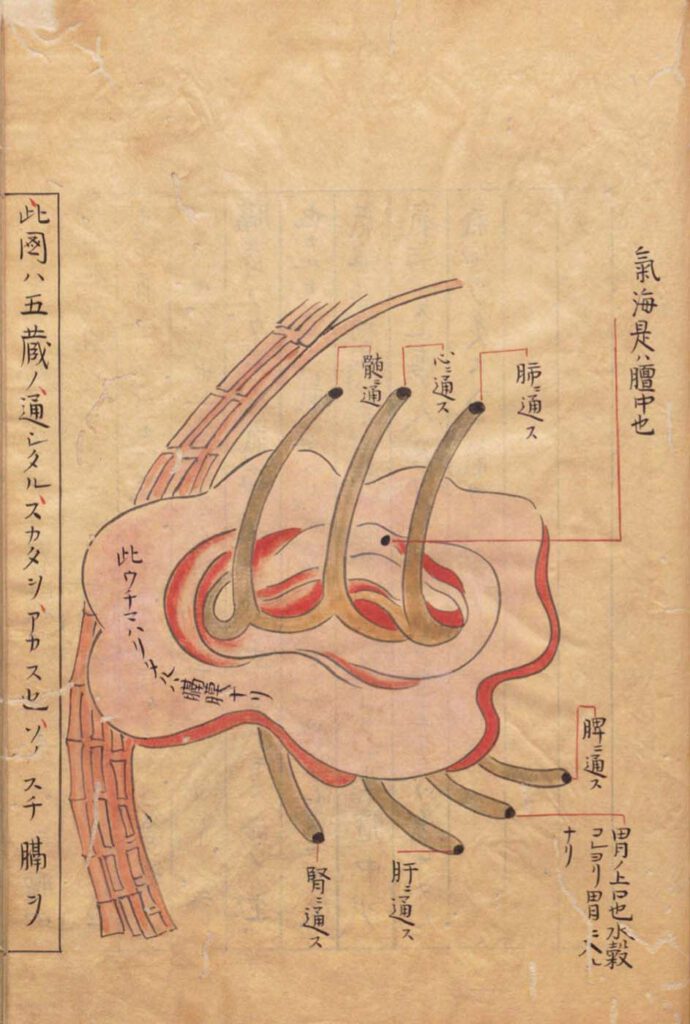
A B The sea of qi and the diaphragm A No title. The sea of qi and the diaphragm. Kajiwara Shōzen 梶原性全 (1265–1337) Man’anpo 万安方, 1315–27, scroll 54. Edo 江戸 period (1603–1868) manuscript. National Archives of Japan. B ‘Illustration of the sea of qi and the diaphragm’, Qihai gemo tu 氣海隔膜圖. Wang Haogu 王好古 (1200–64?) […]
Communication of the connectors of the five solid vessels with the heart.
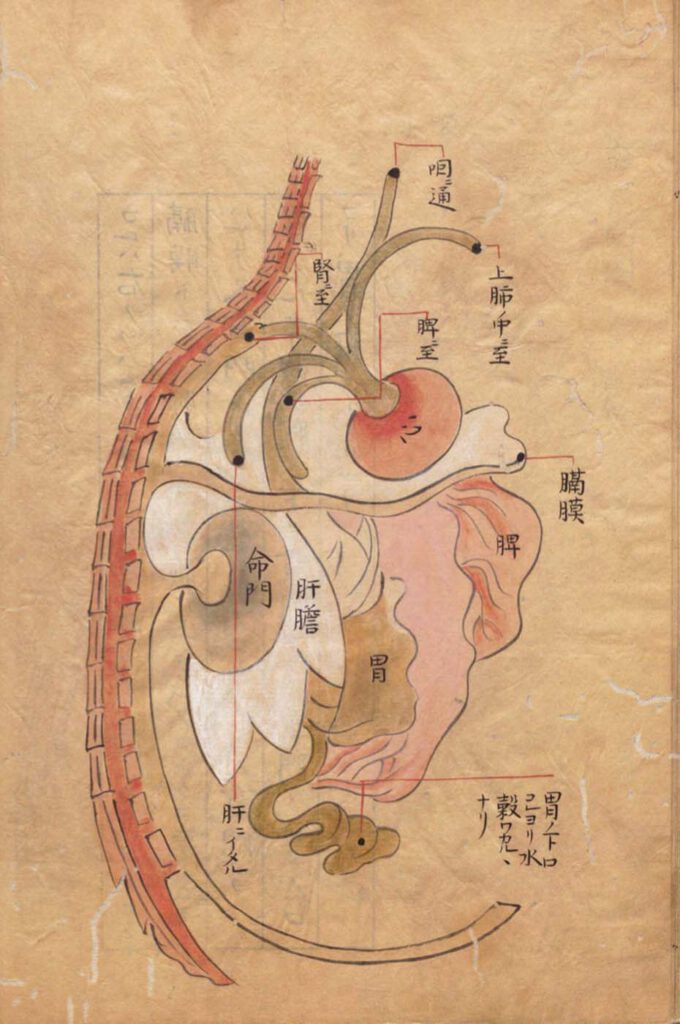
A B Communication of the connectors of the five solid vessels (wu zang) with the heart. A No title. Communication of the connectors of the five solid vessels with the heart. Kajiwara Shōzen 梶原性全 (1265–1337) Man’anpo 万安方, 1315–27, scroll 54. Edo 江戸 period (1603–1868) manuscript. National Archives of Japan. B ‘Illustration of the communication of […]
Canopic Jar Representing the Deity Qebehsenuef
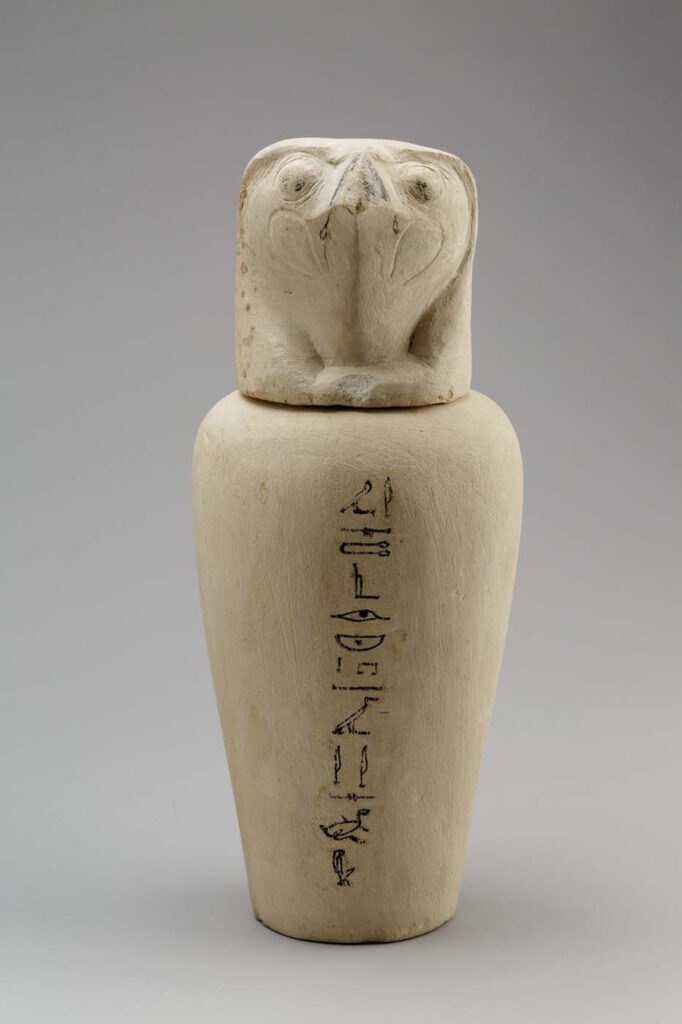
Canopic Jar Representing the Deity Qebehsenuef Photo: Metropolitan Museum of Art – During mummification, the internal organs (excluding the heart, which was generally left in place) were taken out of the body and placed in special containers known in Egyptology as canopic jars. Traditionally, the four canopic jars were connected to four mythological figures known […]
Wall scene from tomb of King Ramesses III
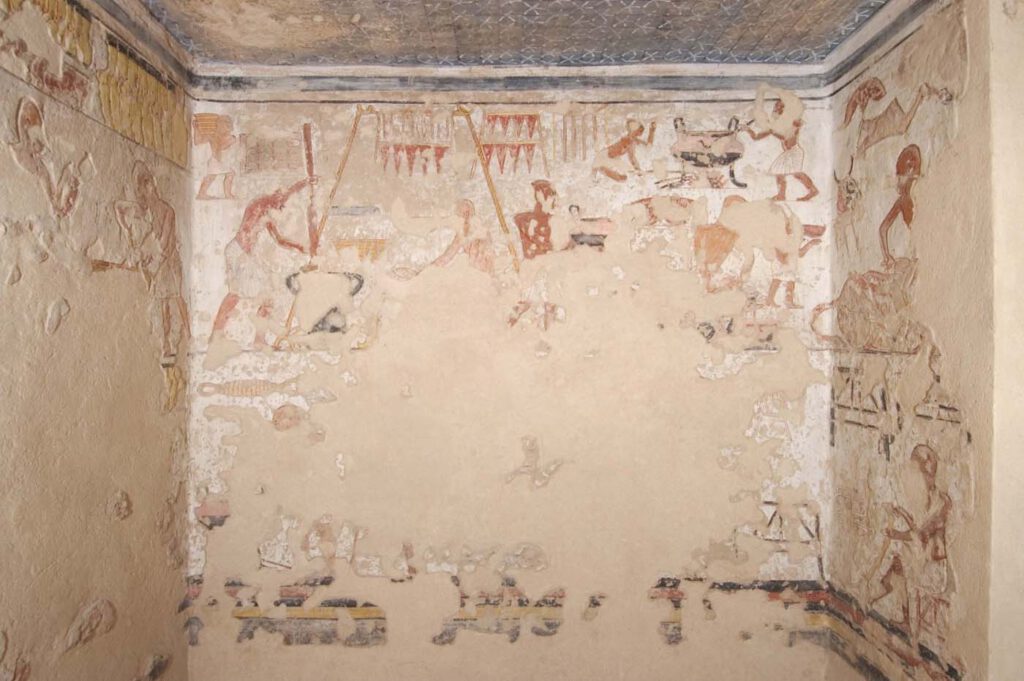
Wall scene from tomb of King Ramesses III (KV11) Photo: Matjaz Kacicnik, Theban Mapping Project – The fragmentary wall decoration of this chamber depicts butchery and cooking activities connected to the funeral or mortuary cult of the tomb’s royal owner. On the right wall a man is seen butchering a bound ox, while the back […]
Hieroglyph from the obelisk of Thutmose III

Hieroglyph from the obelisk of Thutmose III at the Constantinople Hippodrome Wikimedia Creative Commons (CC BY-NC-SA 4.0) – The hieroglyphic sign F46 depicts coiled intestines, abstracted to the point of forming a regular, oblong spiralling shape. As with other internal organs used in Egyptian iconography, the intestines depicted are almost certainly those of an animal, […]
The Spleen and Stomach
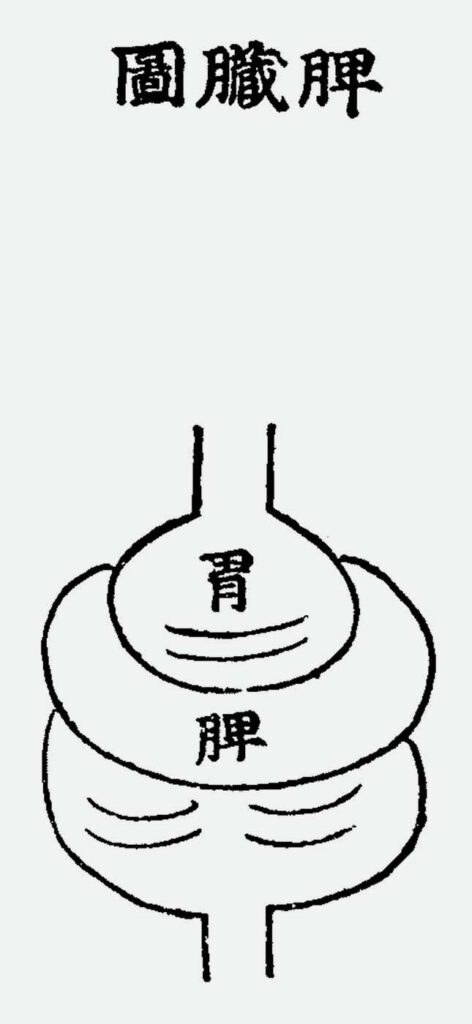
The Spleen and Stomach (from Hǒ Chun, Treasured Mirror of Eastern Medicine). – The spleen helps stomach ki 氣in digesting food and water. The stomach receives food while the spleen is responsible for digesting food. The five viscera and six bowels all receive ki from the stomach. Food passes through the stomach to the intestines. […]
